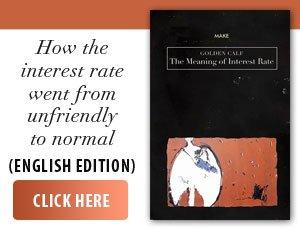China presents a unique paradox for global investors looking at emerging market opportunities: The country's economy is the world's second-largest, contributing nearly a fifth of global GDP, yet its stock market represents only a small fraction of global equity value.
A visualcapitalist.com analysis, conducted in partnership with MSCI, highlights the gap between China's economy and its stock market, and how it compares to other markets.
• What's causing China's gap and what does it mean for investors?
China is not the only country with a larger share of global GDP than its share of global market cap. In many other major countries, economic size outweighs stock market size. However, China stands out because of the magnitude of its gap, while other countries have much smaller shares. In China's case, its share in world GDP is 19%, and in the global stock market - only 3%. India, for example, has a share of 4% in world GDP and 2% in the global stock market; the UK - 4% and 3% respectively; France - 3% and 2%, and Italy - 2% and 1%.
Due to restrictions on foreign ownership and state-owned enterprises, the proportion of China's stock market that is freely available for public trading is small. MSCI indices reflect this freely tradable portion, also known as free float market capitalization. This ensures that the indices are capitalizable, diversified, and accurately represent the market. Ultimately, this means that the Asian country has a low share of market capitalization in a global context.
Beyond analyzing where a company is registered or listed primarily, investors can evaluate country weights in other ways. For example, MSCI also explored the geographical sources of companies' revenues. For example, companies listed in the US, Japan and Taiwan were partially allocated to China because they generated revenues in the country. According to this analysis, China has a global weighting of 10%.
Investing based on income exposure would be much more complex and could overlook local economic, regulatory and policy factors, the source noted. However, such a perspective highlights how China's 3% market cap weighting in global benchmarks can ignore economic realities.
Investors seeking to align more closely with macroeconomic fundamentals might consider a standalone or larger allocation to China.
• China's economy - growth above official target
China's economic slowdown was below expectations in the second quarter of 2025, a sign of resilience to US tariffs, but analysts say weak domestic demand and difficulties facing global trade will increase pressure on Beijing for more stimulus measures, according to Reuters.
China's gross domestic product grew by 5.2% in the April-June period, at an annual rate, a slowdown from the 5.4% advance in the first quarter, official data showed last month. Analysts had expected economic expansion of 5.1%.
"China grew above its official 5% target in the second quarter of 2025, partly due to the development of exports,” said Zhiwei Zhang, chief economist at Pinpoint Asset Management, adding: "The growth of more than 5% in the first and second quarters allows the government to tolerate some slowdown in the second half of the year.”
Compared with the first quarter, when it registered an advance of 1.2%, China's GDP grew by 1.1% in the period April-June 2025, data from the National Bureau of Statistics show. The dynamics are above analysts' estimates, which indicated an advance of 0.9%.
Beijing decided to increase infrastructure spending and stimulate consumption, along with the relaxation of monetary policy, to mitigate the effects of US tariffs.
The latest Reuters poll predicts China's economy will slow to 4.5% and 4% in the third and fourth quarters, amid the difficulties facing global trade.
For the whole of 2025, China's GDP growth is expected to increase by 4.6% - below the official target and below the 5% level in 2024, and to reach 4.2% in 2026, according to the survey.


















































